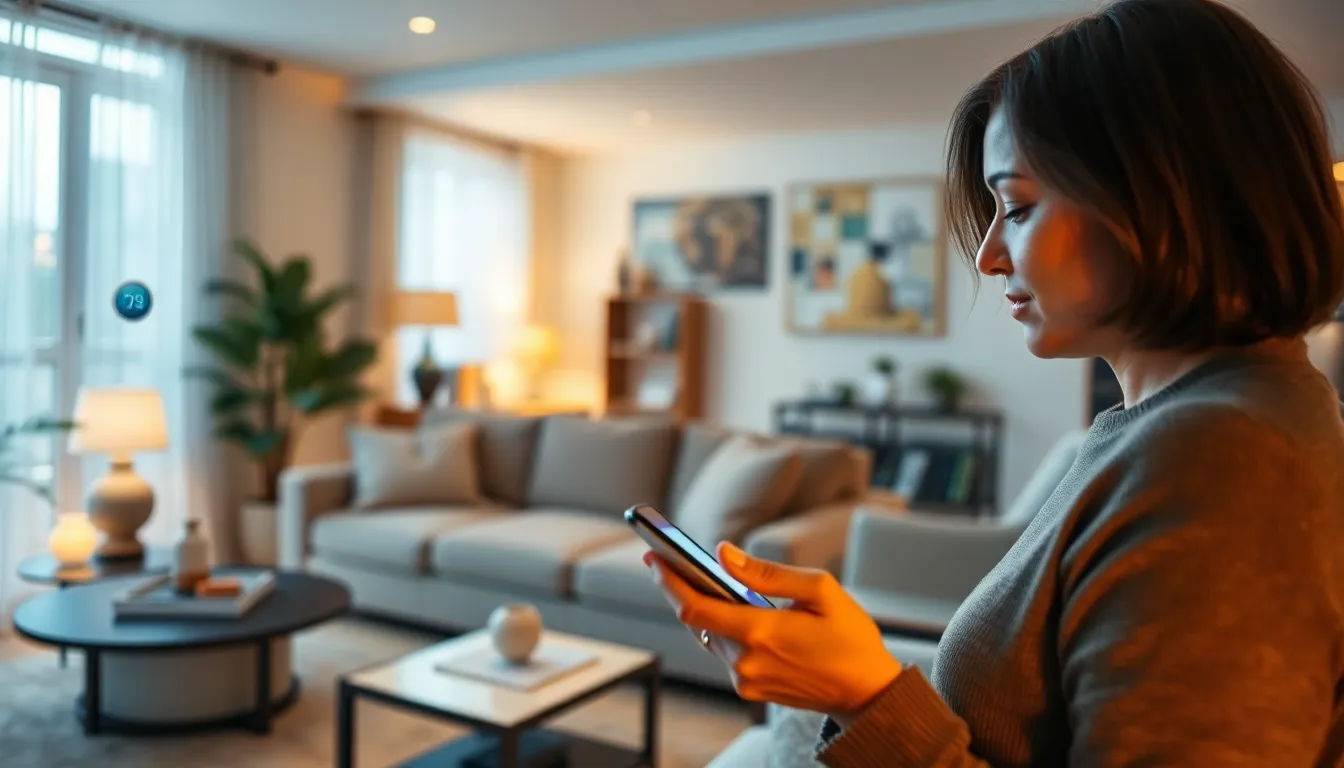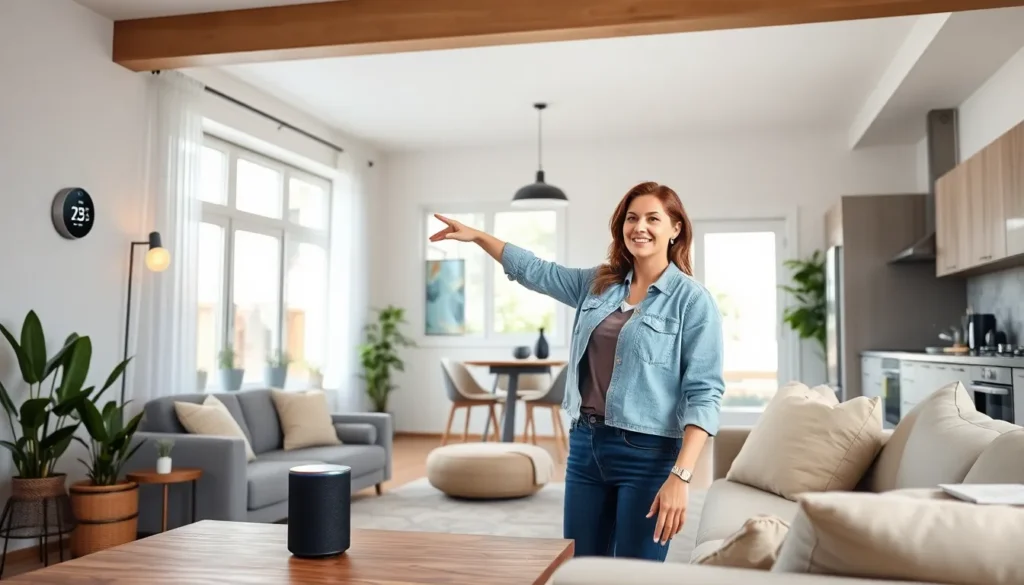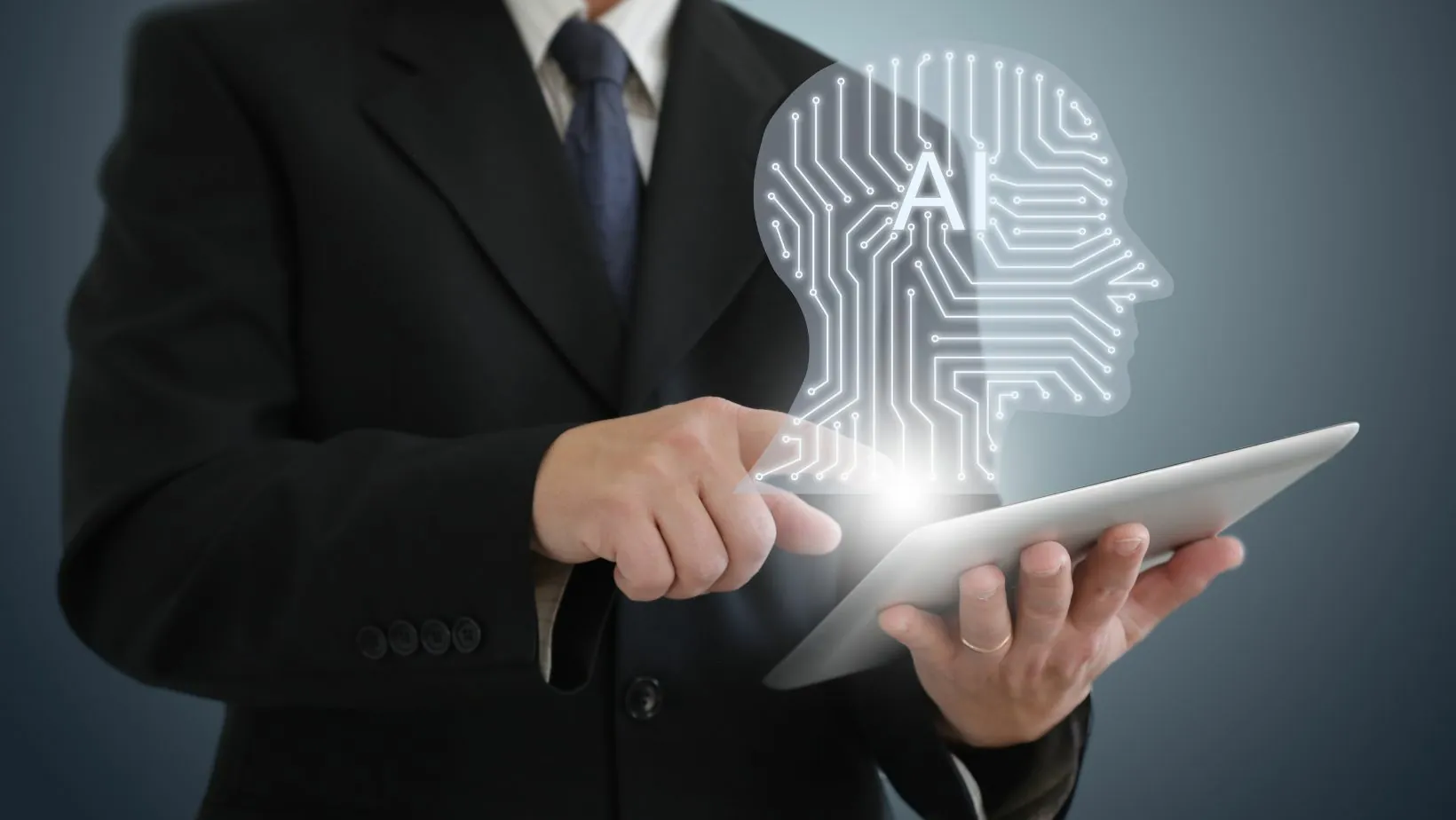Table of Contents
ToggleImagine walking into a home that knows your preferences. With home automation, comfort transforms from a luxury into a daily reality. Smart devices seamlessly integrate into daily routines, adjusting lighting, temperature, and even entertainment systems with just a voice command or a tap on a screen.
As technology advances, the appeal of a connected home grows. Home automation not only enhances convenience but also creates an environment tailored to individual needs. From energy efficiency to security, these systems offer a comprehensive approach to modern living. Embracing this innovation means stepping into a world where comfort is just a click away, making life easier and more enjoyable.
Overview of Home Automation Comfort
Home automation enhances daily comfort by streamlining routine tasks through technology integration. Smart devices facilitate control over lighting, temperature, and entertainment with simple commands or programming. This level of convenience allows residents to customize their environment based on preferences.
Smart lighting systems adjust brightness and color based on time of day or activities. Thermostats utilize sensors to maintain optimal temperatures, contributing to energy savings. Entertainment systems connect seamlessly, enabling quick access to media throughout the home.
The integration of smart-home security systems adds peace of mind. Users can monitor live feeds or receive alerts, enhancing safety and control over their environment. Overall, home automation creates a harmonious living space that aligns perfectly with lifestyle needs, making everyday life more comfortable and enjoyable.
Benefits of Home Automation Comfort

Home automation comfort offers significant advantages that enhance daily living. These benefits include improved energy efficiency and heightened convenience.
Enhanced Energy Efficiency
Home automation systems optimize energy consumption, leading to substantial savings. Smart thermostats automatically adjust heating and cooling based on occupancy, learning user preferences over time. For example, adjusting the temperature by a few degrees can reduce energy usage by 10-15%. Additionally, smart lighting systems use occupancy sensors to ensure lights are off when rooms are unoccupied. Energy-efficient appliances integrate seamlessly, allowing homeowners to schedule operation during off-peak hours, further lowering utility bills.
Improved Convenience
Home automation significantly simplifies everyday tasks. Users control devices remotely through smartphones or voice commands, eliminating the need for manual adjustments. For instance, smart assistants can handle multiple functions, like dimming lights or launching music, with a single command. The ability to create customized routines empowers residents to automate settings based on activities or time of day. Homeowners enjoy the convenience of receiving alerts about security breaches or maintenance reminders, ensuring a proactive approach to home management.
Key Features of Home Automation Systems
Home automation systems provide various features that enhance comfort and convenience in daily living. Key functionalities include smart climate control and automated lighting solutions, each designed to optimize the home environment.
Smart Climate Control
Smart climate control utilizes intelligent thermostats and sensors to maintain ideal temperatures throughout a home. These systems can learn user habits, adjusting heating and cooling automatically based on occupancy patterns. For example, smart thermostats can lower energy use by 10-15% during unoccupied hours. Additionally, remote access allows users to modify climate settings via smartphones or voice commands, ensuring comfort anytime, anywhere. Integration with weather forecasts enables proactive adjustments, optimizing energy consumption while maximizing comfort during extreme temperatures.
Automated Lighting Solutions
Automated lighting solutions enhance home ambiance and energy efficiency through smart bulbs and control systems. These systems can be programmed to adjust brightness and color based on time of day or specific activities. For instance, motion sensors can automatically turn off lights when rooms are unoccupied, leading to significant energy savings. Users can set schedules for lighting changes or control them remotely, providing flexibility and convenience. Moreover, integration with smart assistants allows for voice-activated commands, making it simple to create the desired atmosphere for any occasion.
Challenges and Considerations
Home automation introduces certain challenges and considerations that must be addressed before implementation. Understanding these factors ensures a smoother transition to a smarter home.
Initial Costs and Investment
Initial costs for home automation can vary significantly based on the complexity of the system and the number of devices involved. Basic automation setups may start around $500, while comprehensive systems with advanced features can exceed $5,000. Price factors include smart devices, installation fees, and ongoing subscription services. For example, a smart thermostat typically costs between $100 and $300, while smart lighting systems might range from $50 to $200 per bulb. Budgeting for these expenses is critical, as homeowners often underestimate the total investment needed for a fully integrated system. Long-term energy savings can offset initial costs, but understanding the investment is vital for informed decision-making.
Privacy and Security Concerns
Privacy and security issues pose significant challenges in home automation. Smart devices collect personal data, which can become vulnerable to hacking if not properly secured. According to a 2022 study, 30% of smart device owners experienced unauthorized access to their devices. Users must proactively implement security measures such as strong passwords, regular software updates, and secure Wi-Fi networks. For instance, utilizing a separate network for smart devices can enhance security, preventing unauthorized access to personal data. It’s crucial for homeowners to carefully evaluate the security features of devices and manufacturers to safeguard against potential threats while enjoying the benefits of automation.
Future Trends in Home Automation Comfort
Home automation comfort continues to evolve with emerging technologies. Enhanced integration of artificial intelligence (AI) significantly personalizes user experiences. AI-driven systems learn preferences and habits, predicting user needs and automating adjustments accordingly. For example, smart thermostats now anticipate daily routines, optimizing temperatures before occupants arrive home for maximum comfort.
Increased interoperability among devices represents another trend. Smart home devices from various manufacturers increasingly communicate seamlessly. This interoperability allows holistic control through unified platforms, simplifying user interactions and enhancing comfort. Homeowners can manage lighting, climate, and security with a single application, promoting a cohesive and efficient living environment.
Voice-activated technology is also advancing in sophistication. Future voice assistants will recognize context and nuance, enabling more intuitive commands. Users can engage in conversational interactions, leading to effortless control of multiple systems. For instance, stating “I’m going to bed” can prompt the system to turn off lights, lower the thermostat, and activate security measures all at once.
Moreover, the rise of sustainable technology influences comfort trends. Energy-efficient devices not only reduce utility costs but also contribute to eco-friendly living. Smart devices will routinely adapt to optimize energy usage based on real-time data, allowing homeowners to enjoy comfort while minimizing environmental impact.
Lastly, data integration enhances safety and comfort. Systems will use data analytics to identify patterns and potential hazards. For example, integrating smoke detectors with smart systems allows immediate alerts to app users, empowering them to respond promptly. This proactive approach to monitoring enhances overall reliability and peace of mind within the home environment.
Home automation’s impact on comfort is undeniable. By seamlessly integrating technology into daily routines, it transforms how individuals experience their living spaces. This innovation not only enhances convenience but also promotes energy efficiency and security.
As smart devices continue to evolve, they offer even greater personalization and control over home environments. With the potential for significant energy savings and improved quality of life, embracing home automation is a wise choice for modern homeowners.
Ultimately, the journey toward a smarter home leads to a more comfortable and enjoyable lifestyle, making it an investment worth considering for anyone looking to elevate their everyday living experience.



